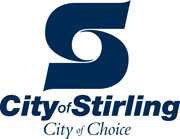Ministry of Health New Zealand
“We are building trust. By tightly managing quarantines, contact tracing, and vaccine distribution all from a single, controlled system, we are building people’s trust and confidence in government at a time when people need that more than ever.”

The Ministry of Health New Zealand develops a cloud system that turns into a strategic evolution in the fight against COVID-19
“The smoother the customer experience, the better the outcome is for everyone,” said Michael Dreyer, Group Manager, National Digital Services, Ministry of Health. “And while that may seem like a bit of an obvious statement, it takes on a whole new meaning when put in the perspective of the kind of high-stress situation that has been COVID-19.”
The Ministry of Health works across the health sector to improve, promote, and protect the health and wellbeing of New Zealanders through: Its leadership of the country’s health and disability system, Providing strong evidence based advice to the Minister, keeping the public informed on key health and disability topic leading the population health strategy and more.
And like any government organisation – healthcare or otherwise – that is in charge of advising on, delivering and/or maintaining programs at a national scale, the Ministry found itself having to rethink a number of its processes in order to deliver a smooth (if not stress-free) customer experience with respect to addressing COVID-19. Its resulting story is one of strategic evolution that demonstrates the impact of adaptability, integration and trust, unlocked with a cloud platform.
Times of crisis call for scalable, integrated, secure services.
In February of 2020, as the first COVID-19 cases started appearing in New Zealand, local health officials started targeting and isolating patients, mitigating widespread outbreaks. But the team knew that the ability to contain clusters would call for “a national elimination strategy,” said Dreyer. “New Zealand has a devolved health system that was managing cases at the local level. But we could see people moving [around the country] and needed a way to scale beyond the resource capacity of a local team.”
While there are a few levers public health officials can pull to manage outbreaks at a national level (contact tracing, border control, and lockdowns), there was no playbook for when to call on one strategy versus another with a problem as big and complex as COVID-19. “Nor how to strengthen and integrate, say, just levers one and two since the third is especially difficult,” Dreyer added. “And integration is key, because again it delivers a smoother customer experience that benefits the individual while also giving us insights to the controls that make a difference.”
Last but not certainly not least, Dreyer and team also needed to think about data. In the early days of the COVID-19 response, there was an abundance of sensitive, clinical, personal data that inevitably ended up on white boards and in spreadsheets as teams around the world scrambled to gain some sense of control. “But that’s not data the government owns; that data is owned by the individual. Which means we needed that much more of a secure and trusted way to manage it. We needed an end-to-end platform that gave us visibility to who was accessing what and when, reduced email activity, and kept data out of common areas,” said Dreyer. “We needed the capabilities that come from using traditional case management and customer management platforms instead of traditional, siloed clinical systems.”
Times of crisis also call for creative problem solving.
Just prior to February 2020, the Ministry had deployed a bowel screening system on the Salesforce platform as a part of its National Bowel Screening Programme (NBSP); those who are eligible can sign up to receive an at-home test in the mail which can detect common symptoms of bowel cancer. Patients sign up to receive the test via an online community portal built on Experience Cloud, where they enter relevant health history and background information. This data, along with test results, is stored in a profile-like record within Service Cloud, which the Ministry uses to follow up on cases, share results, and invite those who tested positive to participate in additional screening services like a colonoscopy, “a workflow that is pretty common across any contact tracing effort,” said Dreyer.
The Ministry team adapted its bowel screening system to develop the country’s contact tracing system, also on the Salesforce platform. It gives the team the modern, digital tools they need to support local health districts on a national scale without sacrificing their ability to pivot to more targeted models when called for given the level of complexity that has defined the COVID-19 pandemic. Here’s how it works:
Similar to the NBSP system, residents who think they might have COVID-19 can register with an online community portal built on Experience Cloud. They are prompted to fill out their background information and guided through a series of COVID-related questions (“Were you exposed to someone who is COVID-positive?” or “Do you have a cough? Fever?” for example) and invited to register for a COVID-19 test.
After test results are available, they are uploaded to the patient’s profile on the backend via Service Cloud. Automated workflow rules notify the patient that it’s time to log back in and get their results, as well as healthcare staff so they can follow up accordingly with any necessary quarantine or isolation orders. Healthcare officials can also collect the information they need to contact the next at-risk person, log their notes, and share updates with the Ministry in real time, bringing the power of the Federal government to each local health district.
Knowledge was layered, serving up helpful articles and FAQs healthcare employees might need when helping a patient. MuleSoft was also included in the core design, giving the platform the ability to integrate with third-party systems through APIs. Shield was also included, enabling the Ministry to add an additional layer of security, along with Sandbox Environments, giving the team a test environment which they use to experiment with different configurations, a capability that became especially critical in the design process as new information, strains, policies, etc. come to be. “We worked with our regional partners, co-designing a system that not only met the changing needs of frontline staff, but also included the type of security controls that are required of a national programme that is dealing with personal data,” said Dreyer.
Measurable results deliver headline-making impact.
The Ministry’s initial contact tracing system went live in just 10 days, and worked to deliver regular releases each week based on feedback from end-users across five development streams still running simultaneously. And this effort paid off:
In August of 2020, the New England Journal of Medicine (along with countless other publications) stood up New Zealand as the premier example of how to eliminate COVID-19 transmission after the country reached a zero-case count while the rest of the world was wrestling with exponentially rising charts; “There are several lessons from New Zealand’s pandemic response. Rapid, science-based risk assessment linked to early, decisive government action was critical. Implementing interventions at various levels (border-control measures, community-transmission control measures, and case-based control measures) was effective. Prime Minister Jacinda Ardern provided empathic leadership and effectively communicated key messages to the public — framing combating the pandemic as the work of a unified ‘team of 5 million’ — which resulted in high public confidence and adherence to a suite of relatively burdensome pandemic-control measures.”1
The team has continued to adapt its strategy as the COVID-19 crisis has evolved and repurpose the same design for additional processes. They added a number of border management tools in place, adjusted certain fields to now also support vaccine distribution, a booking and scheduling system and are now turning learnings of this nation wide rollout into the foundation for a larger immunization system that forms an end to end service delivery platform providing every citizen and healthcare professional real time access the required data and information.
“Most importantly, we are building trust,” said Dreyer. “By tightly managing 14-day quarantines, contact tracing, and vaccine distribution all from a single, controlled system, we are building people’s trust and confidence in government at a time when people need that more than ever.”
Keep exploring stories like this one.
Questions? We’ll put you on the right path.
Ask about Salesforce products, pricing, implementation, or anything else — our highly trained reps are standing by, ready to help.












